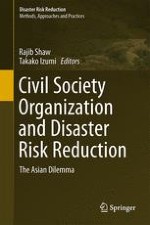2014 | OriginalPaper | Buchkapitel
6. Risk and Vulnerability Assessment: Experience of Nepal
verfasst von : Amod M. Dixit
Erschienen in: Civil Society Organization and Disaster Risk Reduction
Verlag: Springer Japan
Aktivieren Sie unsere intelligente Suche, um passende Fachinhalte oder Patente zu finden.
Wählen Sie Textabschnitte aus um mit Künstlicher Intelligenz passenden Patente zu finden. powered by
Markieren Sie Textabschnitte, um KI-gestützt weitere passende Inhalte zu finden. powered by
